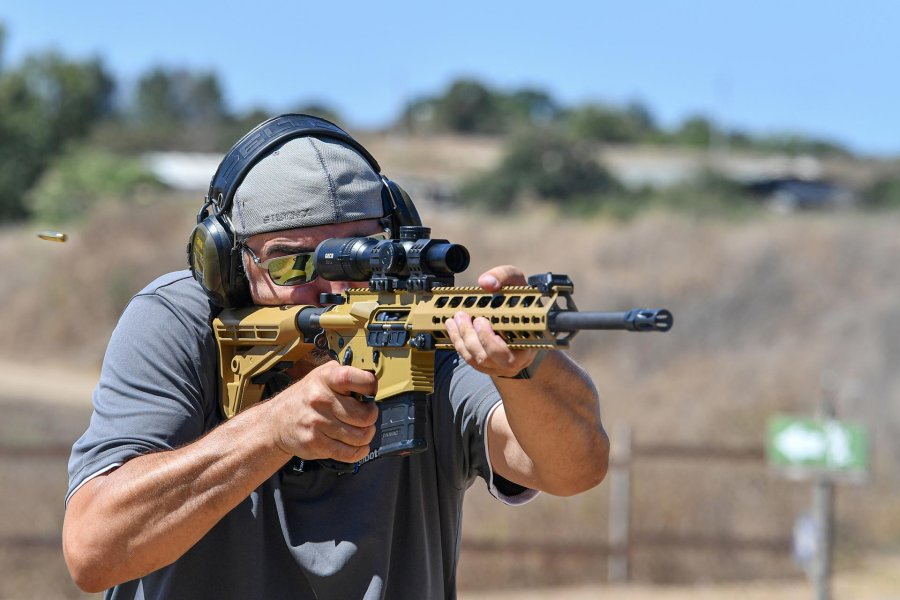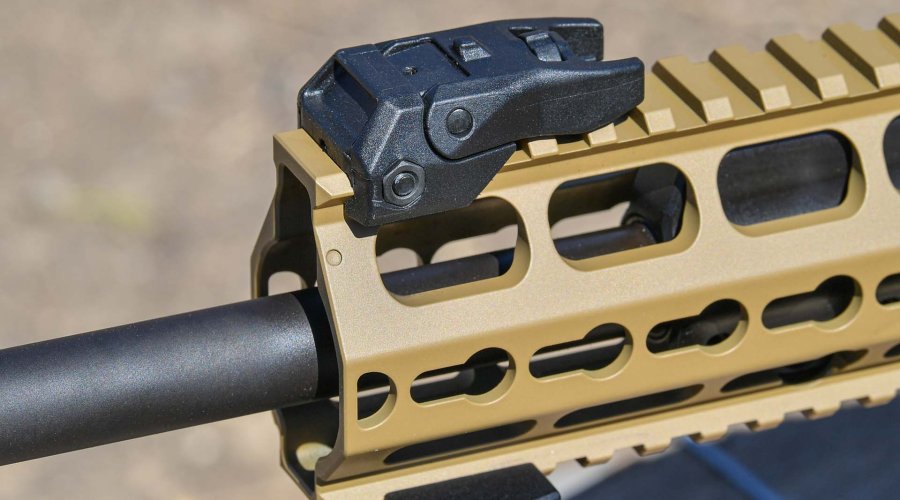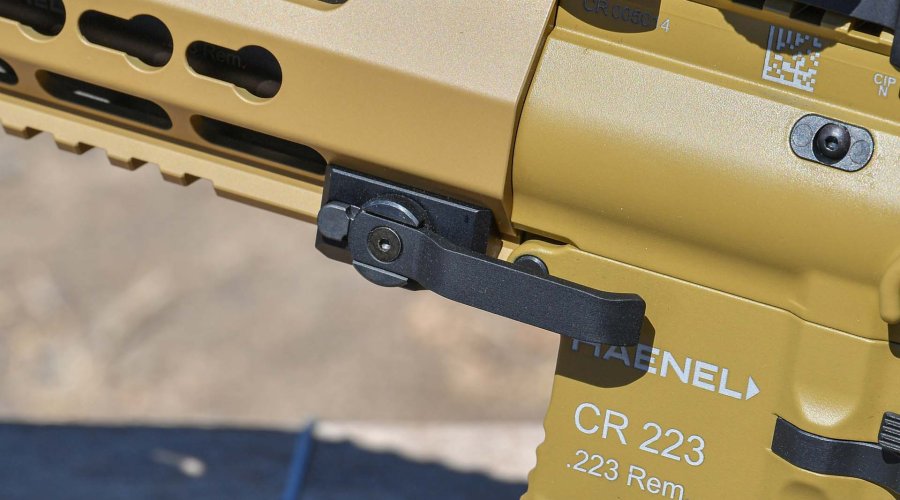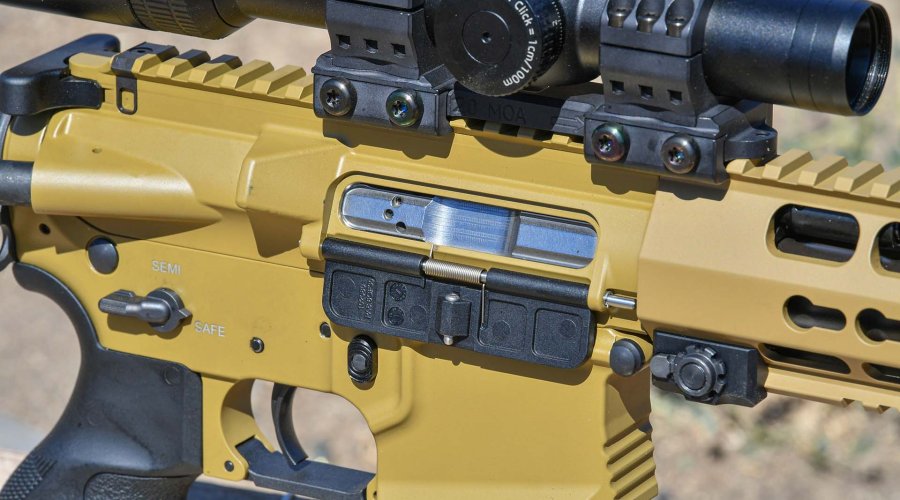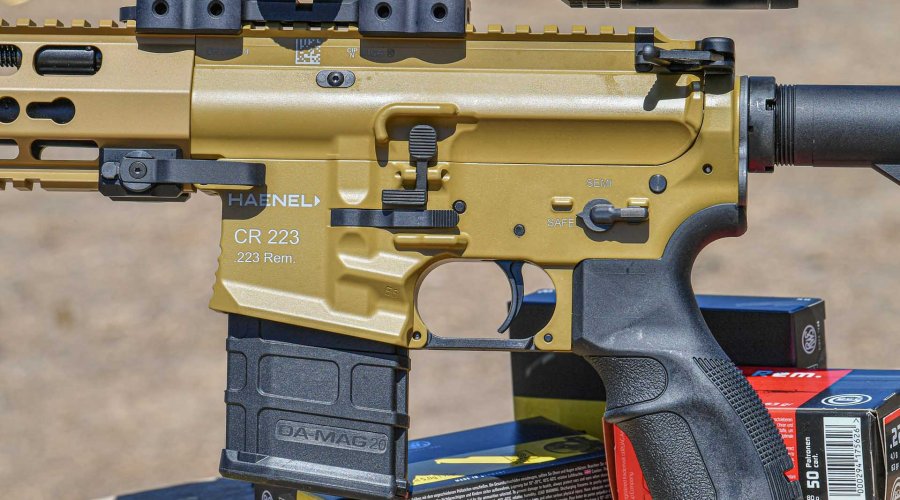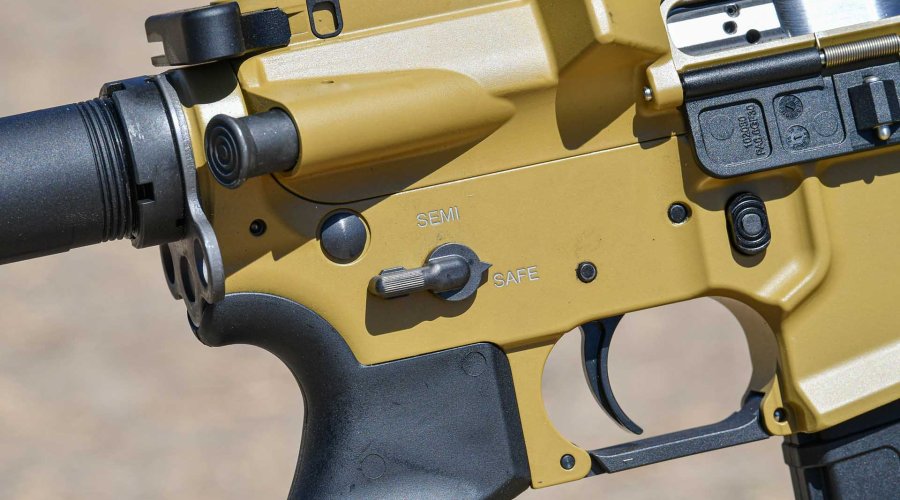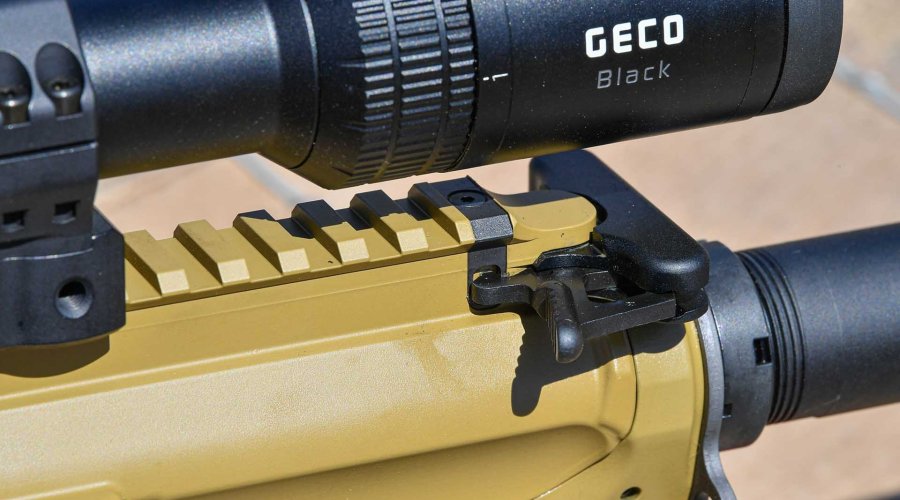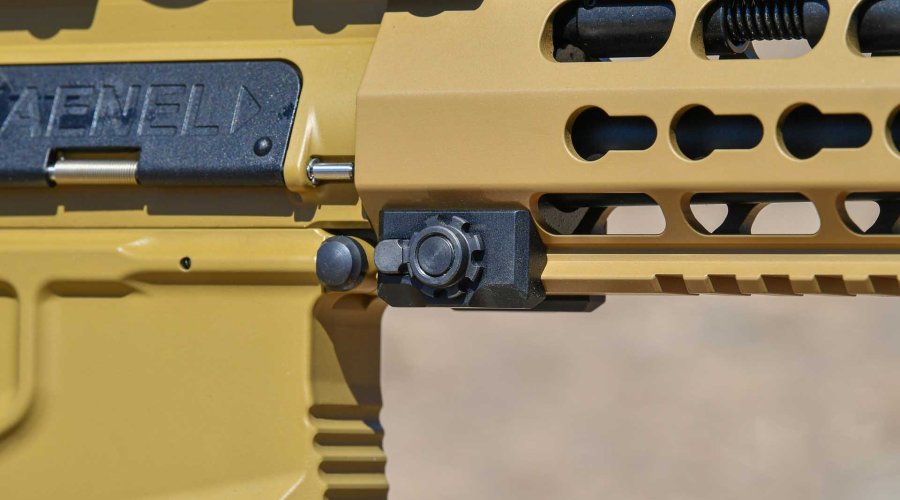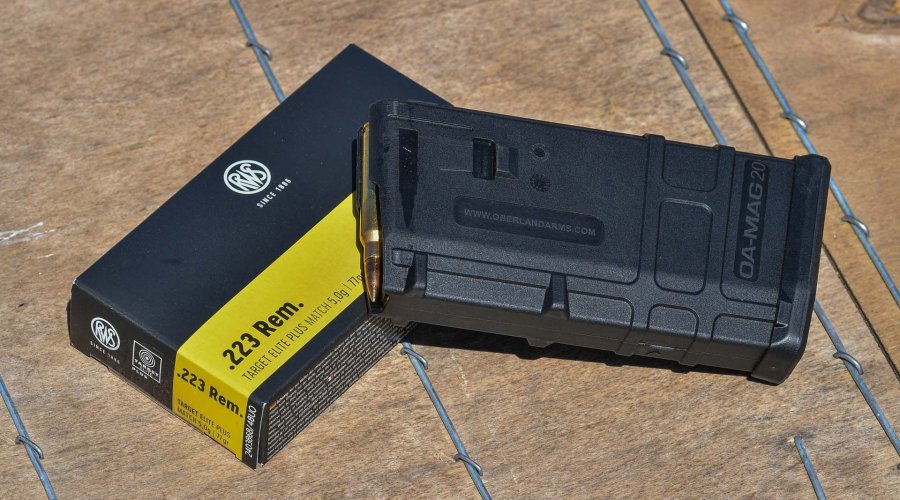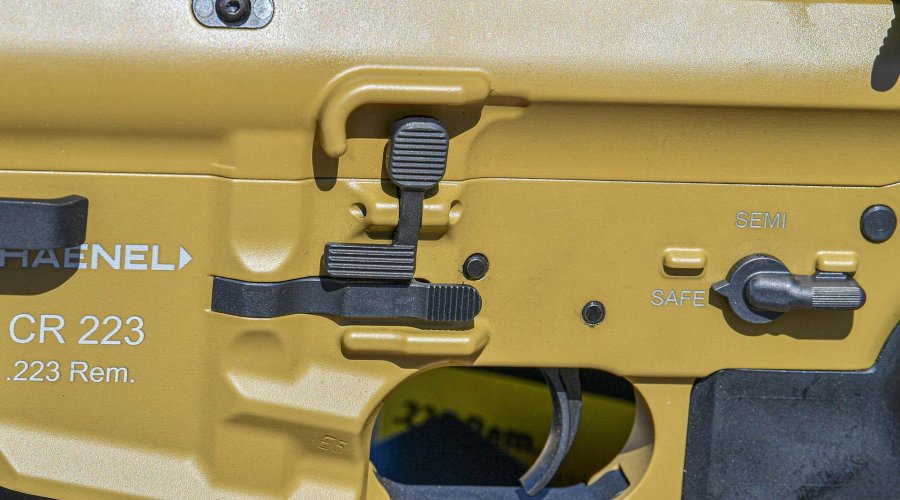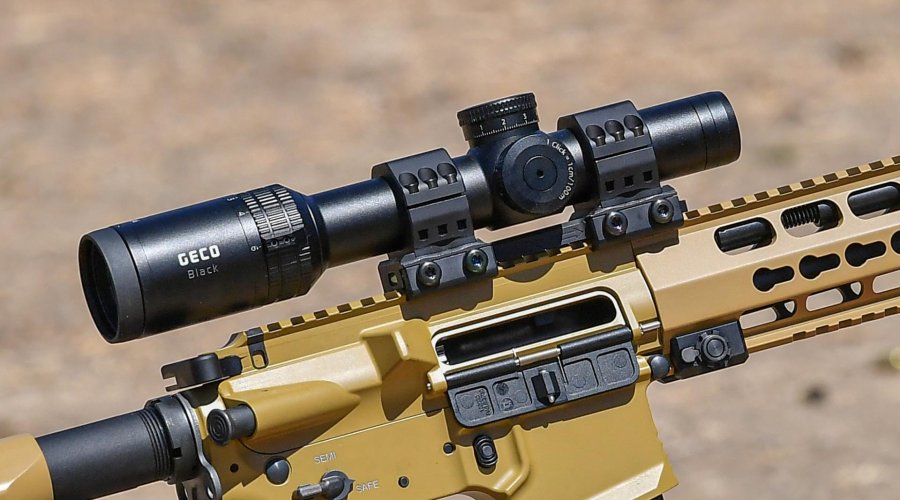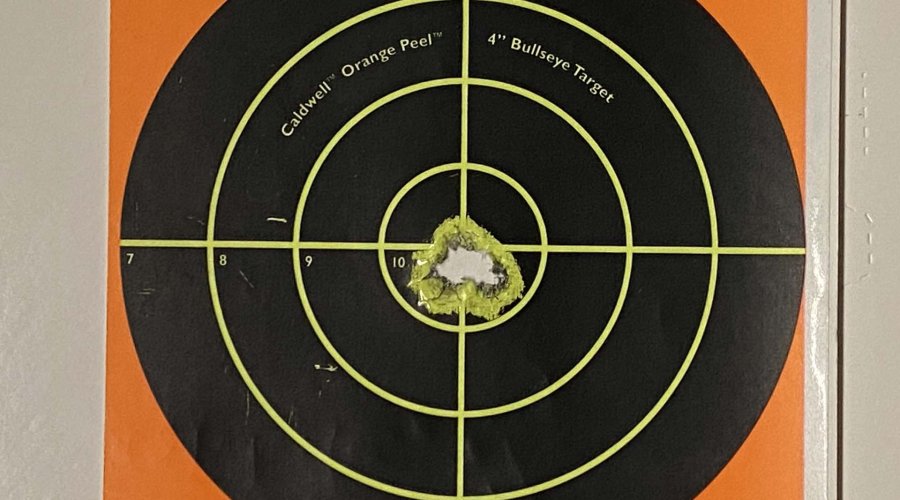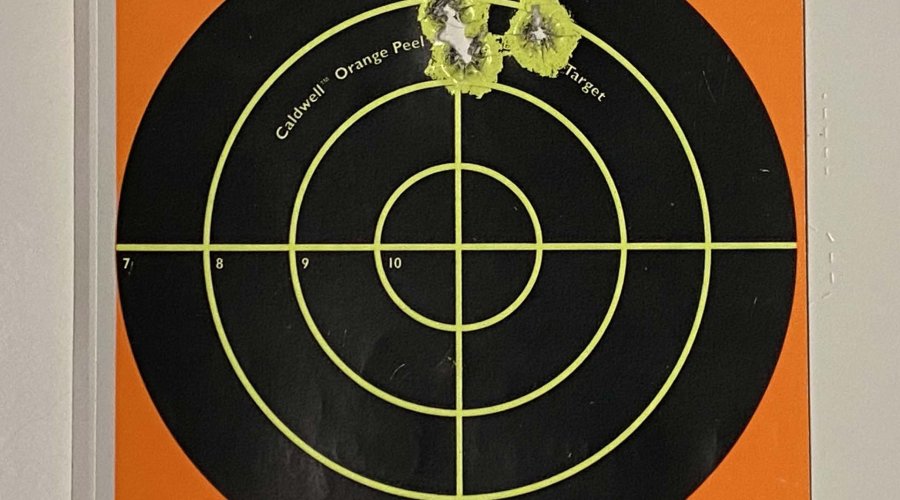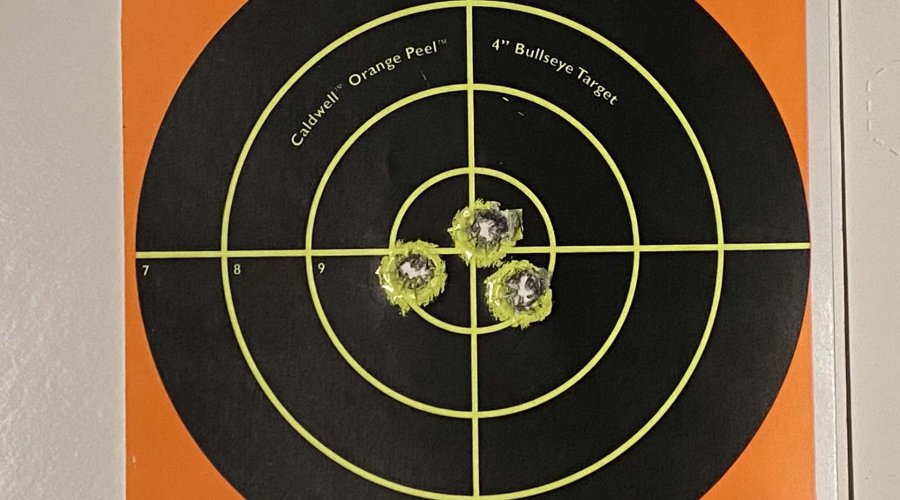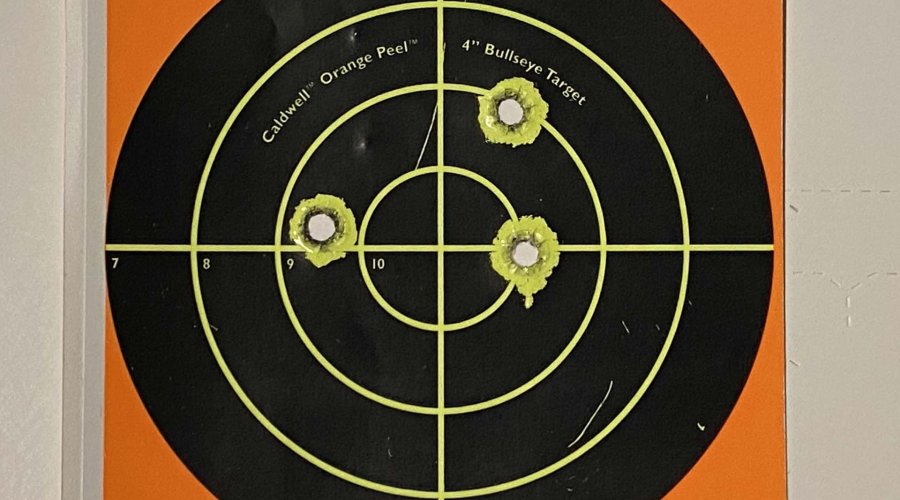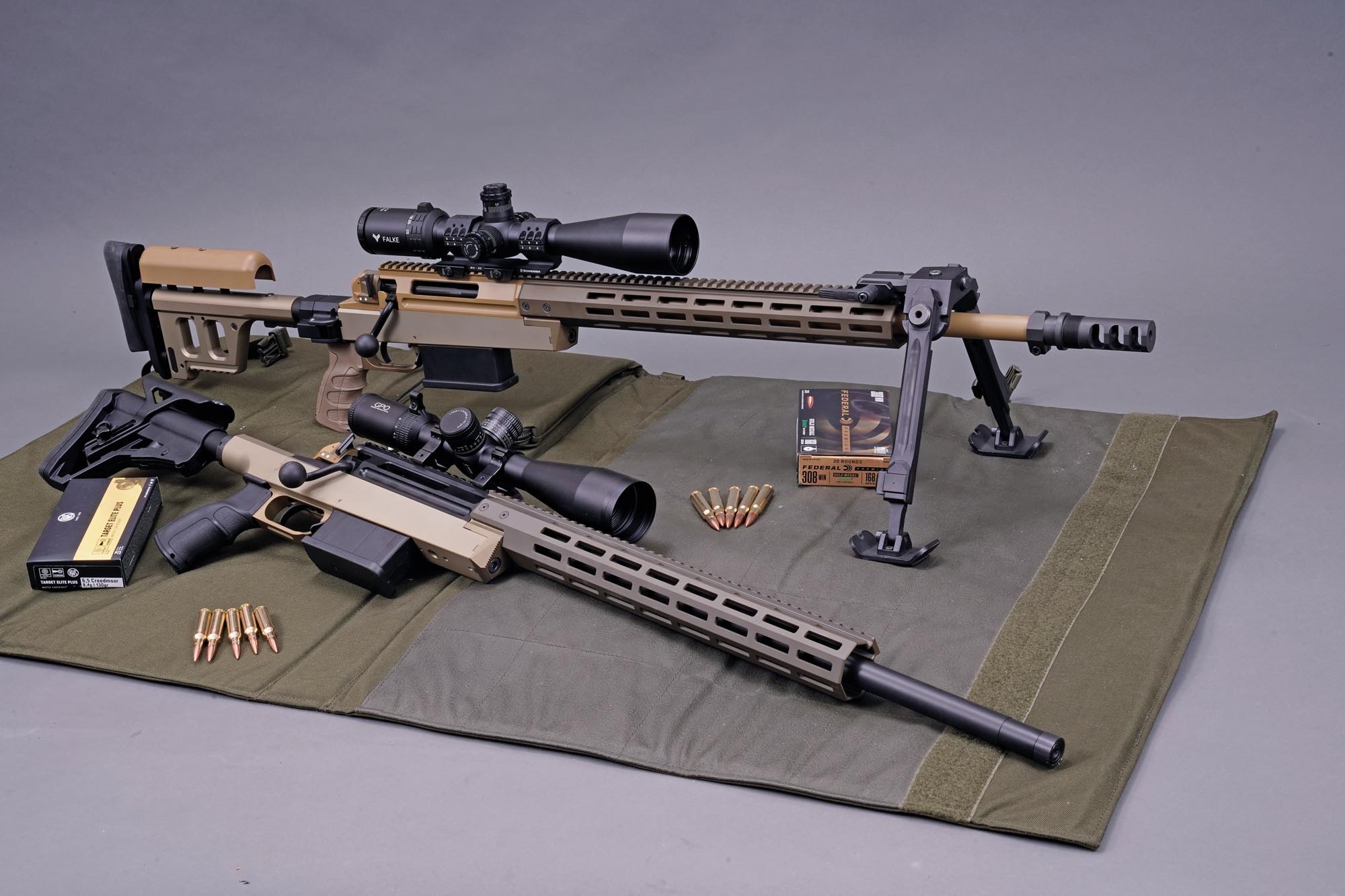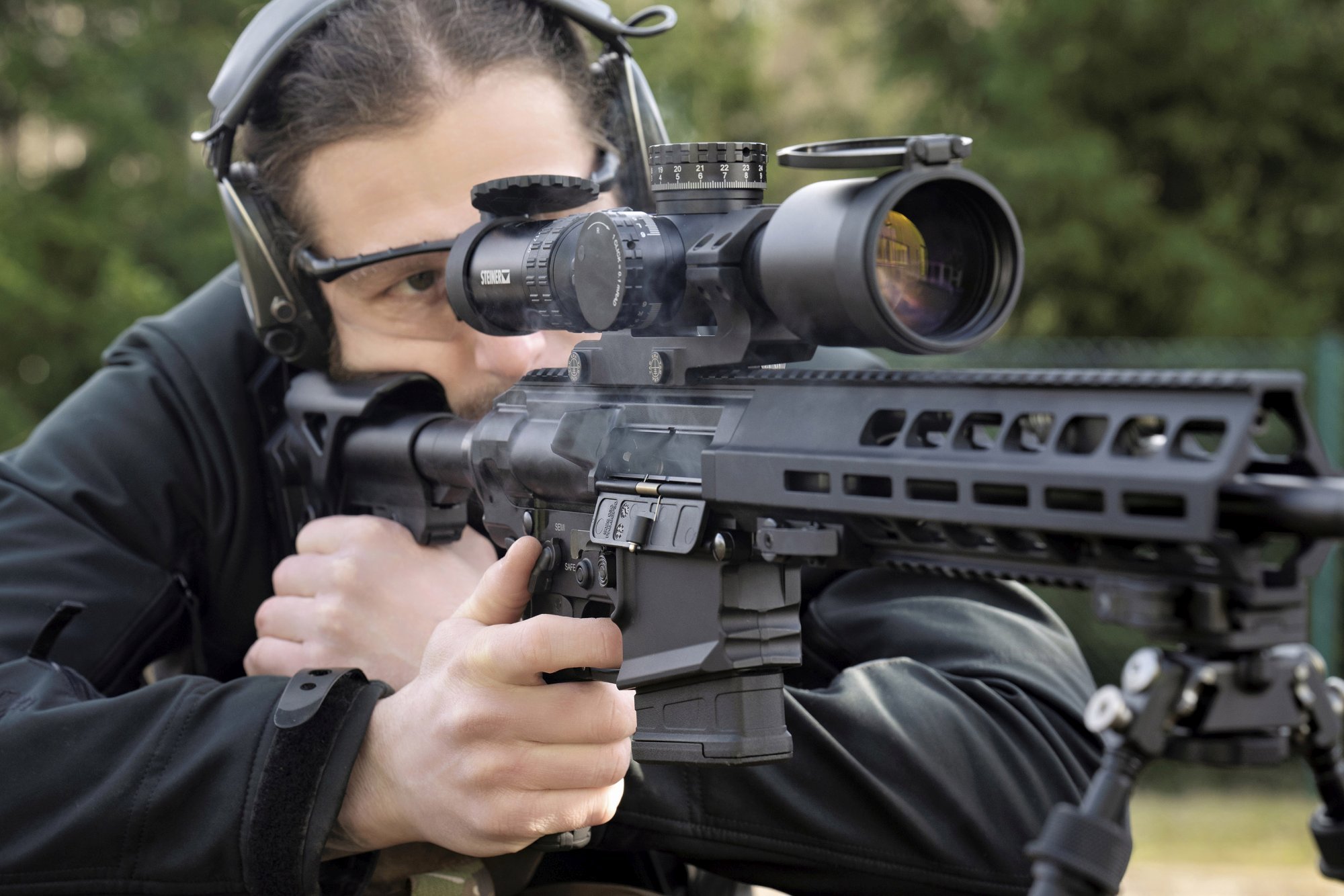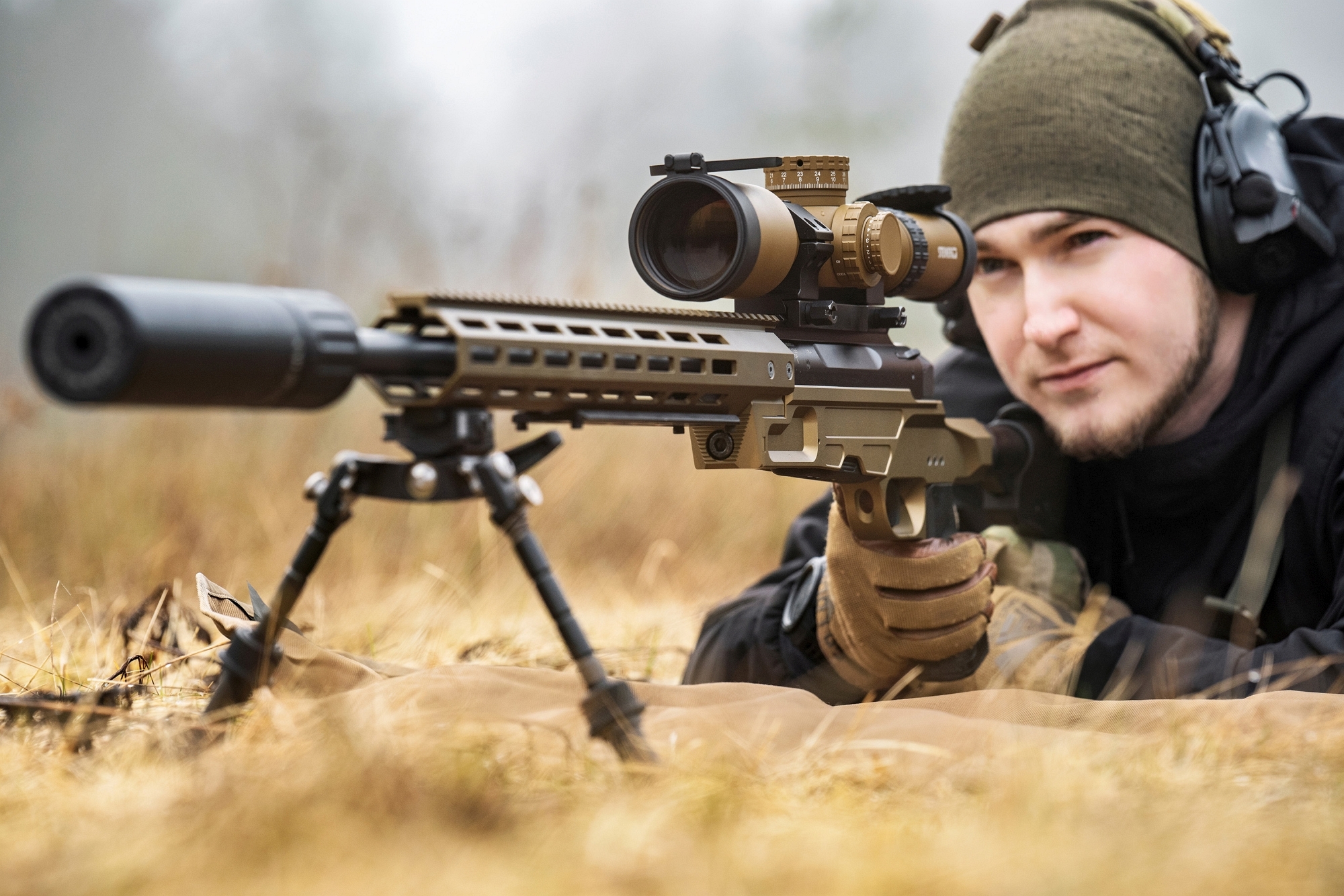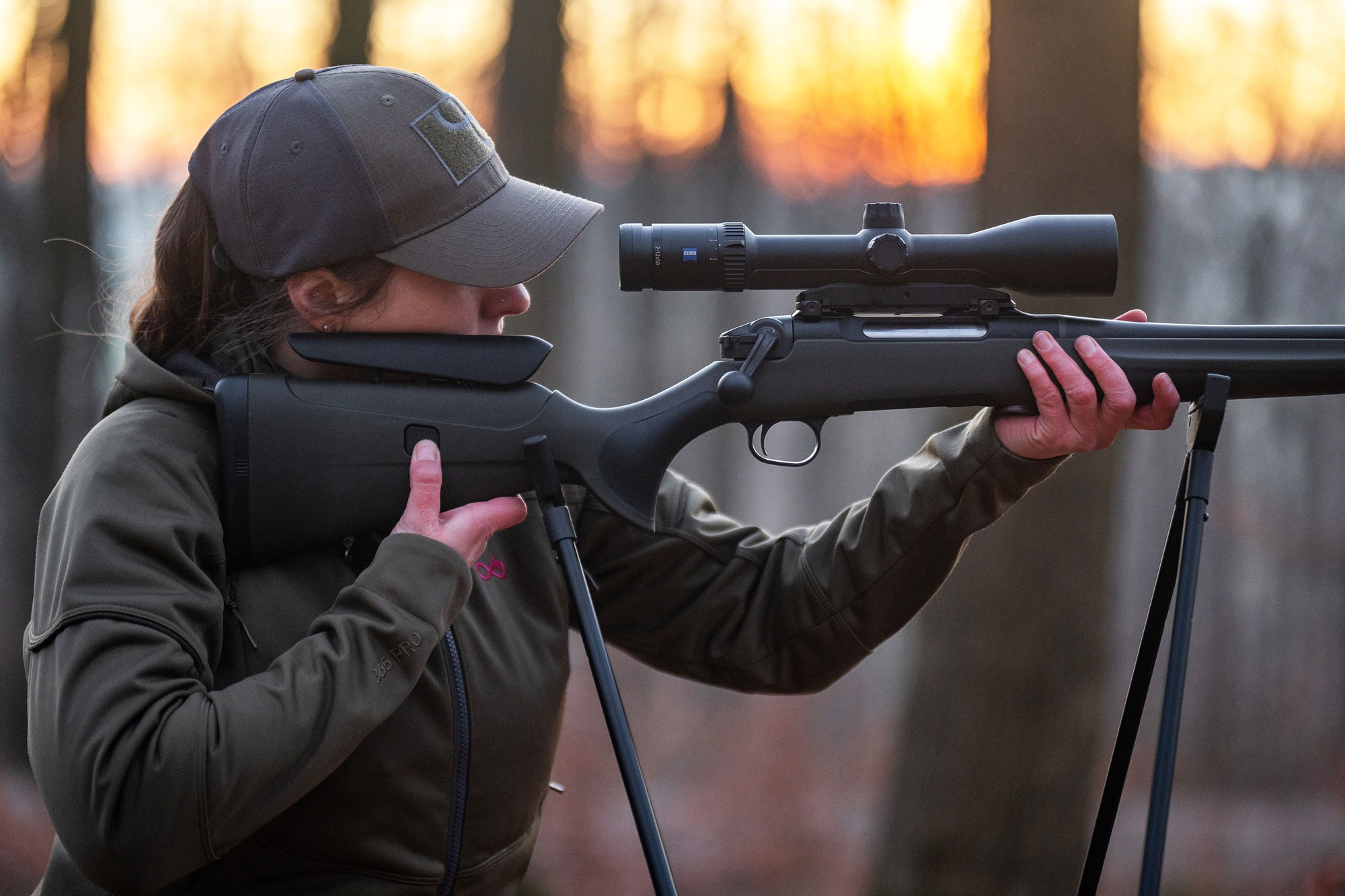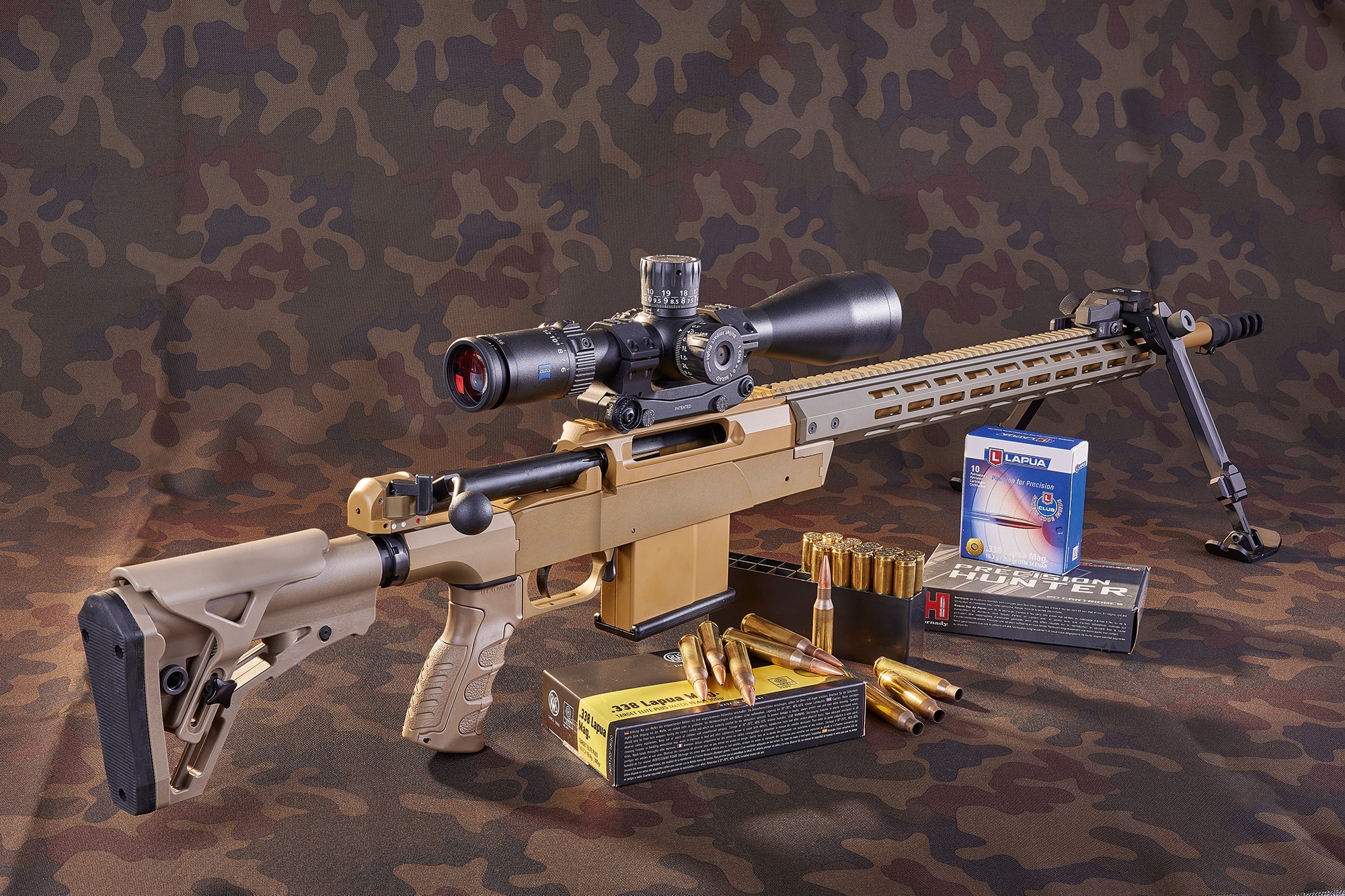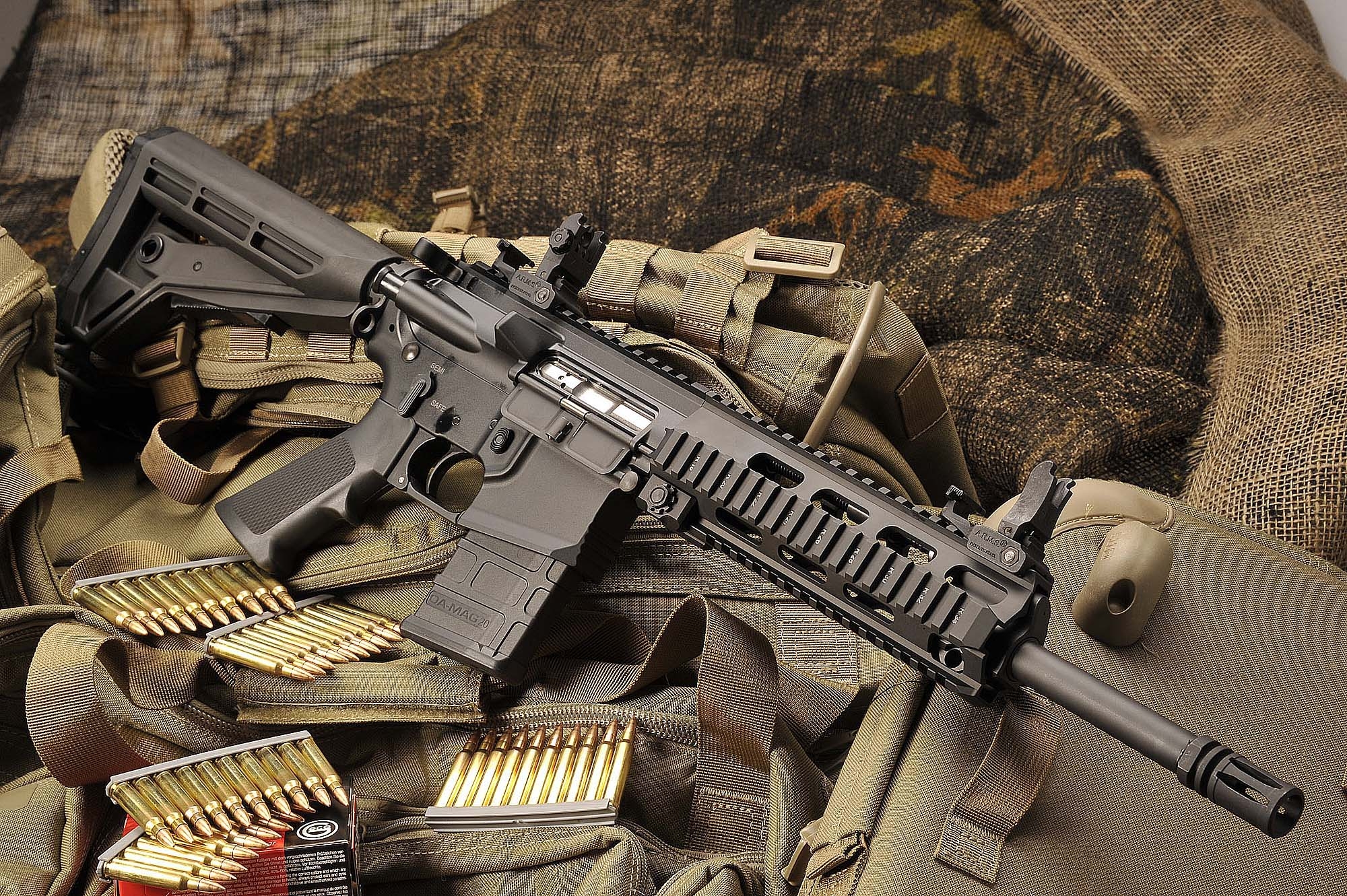all4shooters has already tested the CR 223 semiautomatic carbine by C.G. Haenel GmbH in the past, but over time this rifle has been refined and updated, also following specific requests included in one of the most important present military small arms tenders in the EU, worth 250 million euros, for the adoption of the new German army assault rifle, replacing the HK G36. A race that Haenel won, but following a legal appeal by Heckler & Koch, the contract for the supply of the gun was canceled.
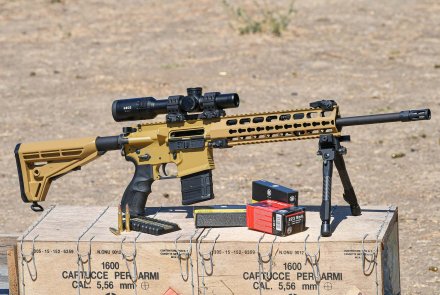
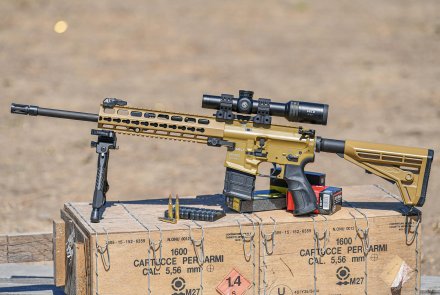
Let's take this opportunity to try the latest version of the CR 223, finished in RAL 8000 tan color with black accents, telescopic stock and a 16.65” barrel – it is in fact a version that very closely resembles the configuration of the weapon that could have, or still may become the Bundeswehr service rifle. We completed the set-up with a Geco Black 1-6x24i riflescope and a one-piece Tier One scope mount. To complete the “Made in Germany” package, we used Geco and RWS ammunition in the live fire test.
Features of the Haenel CR 223
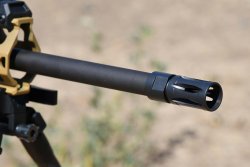
A brief description of the firearm is a must. The Haenel CR 223 semi-automatic rifle is based on an indirect gas operating system based on a short stroke piston and rotating bolt with seven locking lugs. The receivers are forged in 7075-T6 alloy, hard anodized and, in our case, coated with Desert Tan Cerakote finish. The 16.65”/423mm cold hammered barrel is built from stainless steel stock, with a six groove, right-handed rifling and a 1:9" pitch versus the faster 1:7" pitch of the military version, and finished in a black anti-reflective coat.
The chamber changes too, from 5.56 NATO to civilian .223 Remington, as clearly marked on the barrel. Threaded onto the muzzle we find a classic birdcage flash hider.
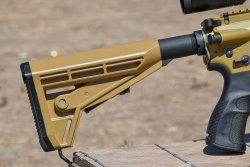
Both the telescopic stock, adjustable on six positions, and the 20-round (reduced to 10) magazine are manufactured by Oberland Arms; the stock is Mil-Spec buffer tube diameter compatible. The pistol grip is instead of FAB production and contains a small spare parts compartment closed by a hinged door.
The trigger pack, although fully compatible with a Mil-Spec lower receiver, has a peculiarity: it is possible to engage the safety even when the hammer is down.
The upper and lower receivers have interesting improvements, such as the ambidextrous magazine release lever, the wear preventing steel inserts in correspondence with the charging handle latch (with tactical extension lever for improved operation) or the steel plate to lessen wear inside of the upper at the bolt carrier pivot pin location.
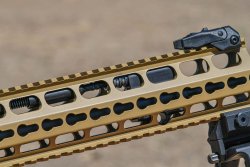
The forend has also been redesigned, instead of a quadrail, it now features just two MIL-STD-1913 Picatinny rails, one on top, and one on its bottom; 11 KeyMod points are milled on each of the sides. The forend is mounted on the cylindrical Barrel Nut with a self-centering system tightened with a lever, which allows for a forend quick disassembly for maintenance of the short stroke piston operating system, and at the same time ensures return to zero of any mounted accessories, such as iron sights, aiming lasers, additional clip-on optics possibly mounted on it.
Despite a proprietary operating system and configuration, the CR 223 is totally compatible with all Black Rifle after-market accessories available.
The test
We were quite surprised by the weight of the gun: despite the short stroke piston system, mid-heavy barrel, milled alloy free floating fore-end system, etc. the CR 223 is still light enough to be lightning fast in handling, due also to an excellent weight distribution, unlike some other Made in Germany direct competitors, which have always seemed to us a bit muzzle-heavy, requiring a greater effort to control in a fast and dynamic engagement.
The ergonomics of the controls is excellent. We approve the choice of offering ambidextrous safety lever and magazine release catch, with a left side lever control that is a cross between the Norgon Ambi-Catch and the KAC ambi lever and which turns out to be perfect in use and operation. Trigger quality is excellent with a release weight of 3 kilos, very clean, with a short pull and reset, and very far from the typical characteristics of the average Mil-Spec triggers found in many black rifles. Haenel completely redesigned the trigger mechanical geometry and components of the trigger chain, which makes it even more surprising considering that both pin diameter and their position in the lower remain entirely Mil-Spec.
The CR 223 charging handle is Mil-Spec, but for an extended tactical latch lever to improve operation, especially with optics. In this respect, the single-piece 20 MOA incline base with six-bolt rings supplied with the gun was slightly too low – we couldn't even mount the rear BUIS under the eyepiece – and despite this, thanks to the oversized latch, we had no problem with loading or unloading the gun, not even in the more “dynamic” phases of our range sessions.
When fired, the Haenel CR 223 almost doesn’t move, it’s recoil is perfectly neutral with minimal muzzle flip and a perfect line of sight control of the target, despite the fact that the birdcage flashhider does not perform the function of a compensator. The gun’s reaction to the shot is pleasant, recoil is not sharp on the shoulder, also thanks to the gun’s weight – which is not felt, as we mentioned before, but is still all actually there, since our configuration weighed 4460g with optics, mount and an empty magazine. Spent case ejection is positive and very consistent: cases all fall in a circle of one meter in diameter. Our Geco Black 1-6x24i optic performed very well. We’re not shy to say that the Black, both in the smaller version featuring 1 to 6 magnification with 30 mm tube and its bigger sibling, with a 1 to 8x magnification and 34 mm tube, is by far our favorite Geco optic. The illuminated horseshoe reticle with central dot in the first focal plane is well made, and both optically and mechanically, the Black has nothing to envy to competitors in its price class.
Accuracy at distances of 100 and 200 meters of the rifle from the bench is nothing short of outstanding, the groups speak for themselves. The preferred ammunition was obviously the RWS Target Elite Plus Match loading with a 77-grain HPBT bullet; we did have good performance with the newest offering from Geco, the DTX budget load (boxes contain 150 rounds) with a 55-grain FMJ bullet, with this load our groups opened a little, and we noticed a substantial shift in the POI compared to the excellent (and much more expensive) RWS load, shooting about 3 cm higher at 100 m.
The best groups measured 9 mm at 100 m with the RWS Target Elite Plus Match, and just over 18mm with the DTX; at 200 m the group opens substantially with the DTX, reaching 35 mm, while with the RWS it usually remains below 20 mm.
The price is, once again, reasonably affordable, considering the quality level of materials used, workmanship and finish, as well as the performance shown in our tests.
Our opinion on the C.G. Haenel GmbH CR 223 semi-automatic rifle can be summed up in a simple statement: the gun is not going back to the distributor...
